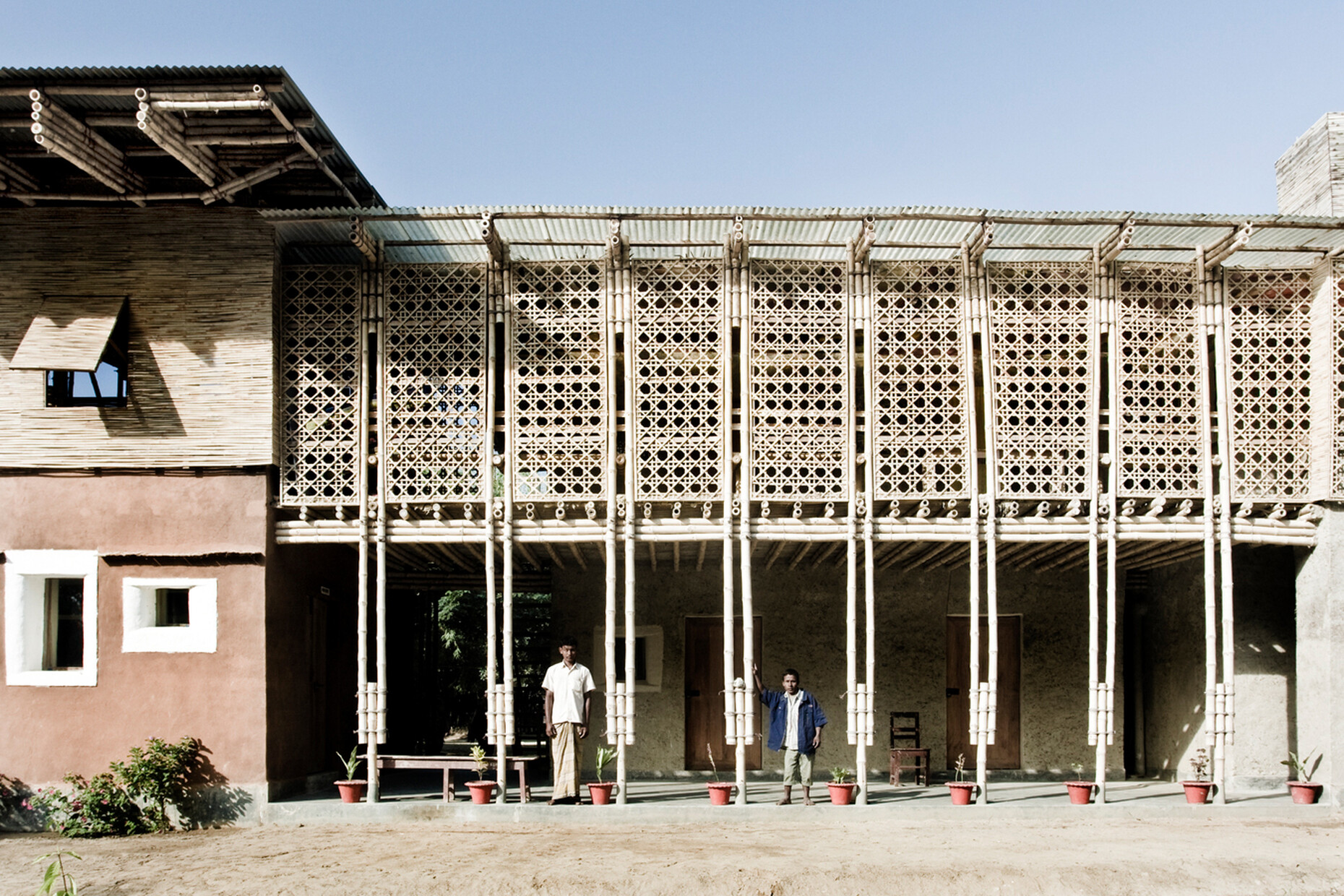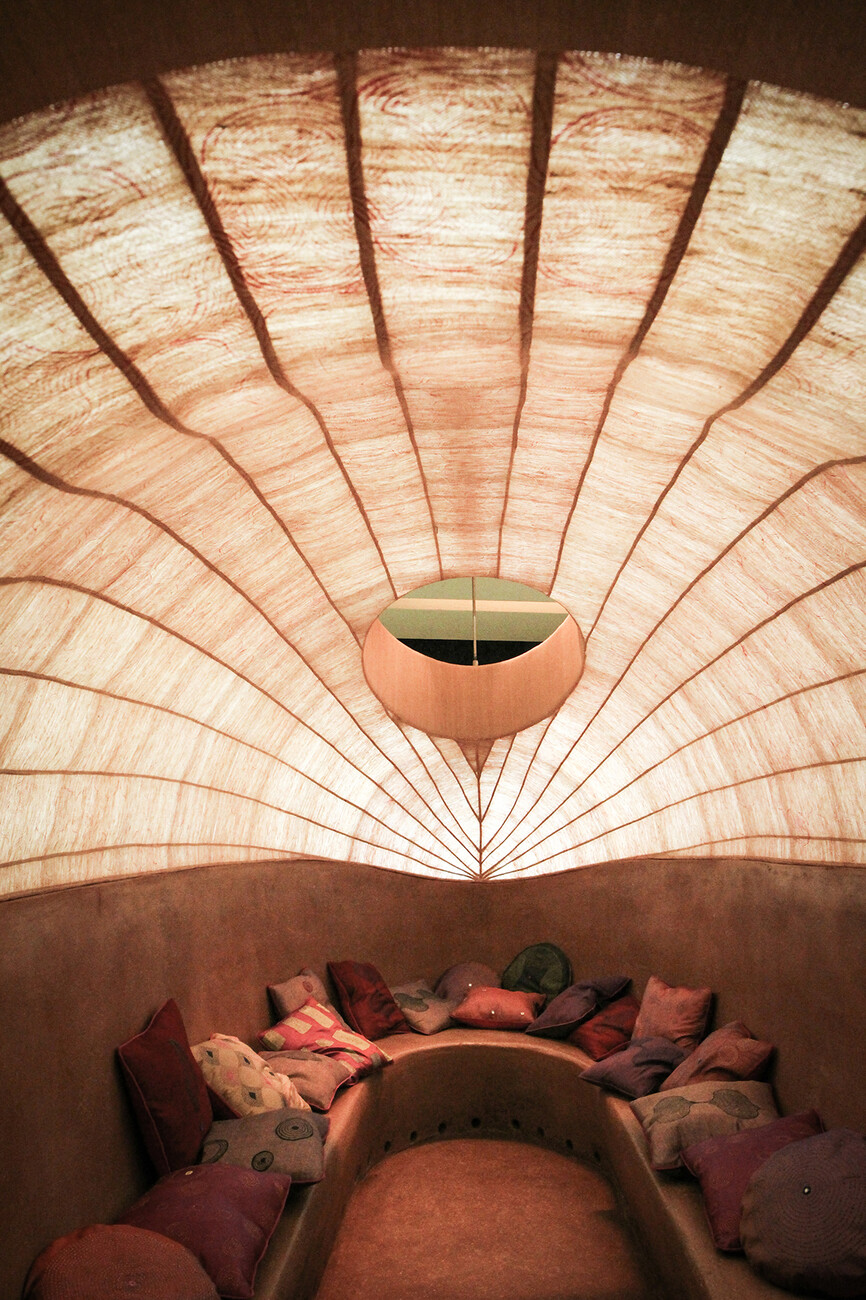Spotlight on Women Architects – Anna Heringer
To the many awards that the German architect Anna Heringer has already received for her work, another has now been added. On 30 September 2022, she received the Federal Cross of Merit. For architects, this is quite an unusual award. And there was no other architect among the other 19 honoured on that day - Heringer had once again earned a special role, as she has done many times in her professional life. Since the beginning of her career, she has not only dedicated herself to sustainable building, but also specifically to the centuries-old tradition of clay building. In addition, she likes to build her projects in dialogue and with the active, building assistance of her clients. Today, she is an internationally recognised expert in the field of socially and climate-friendly construction.
The story of her life began in Laufen, Upper Bavaria, near the Austrian border, where Heringer grew up. In an interview with the Süddeutsche Zeitung, Heringer once said that the idea of recycling was always present in her parents' house. Her father Josef Heringer was a landscape architect and ecologist who early on was convinced of the ideas of a more sustainable, frugal economy and of a careful use of natural resources. Circular thinking did run away with the father somewhat when he enthusiastically told guests that the food grew in their own garden where there used to be a cemetery, so that the food fed on the remains of the Laufeners - but this did not harm their commitment to sustainability.
After school, Anna Heringer went to Bangladesh for a year and worked there for the non-governmental organisation Dipshikha, which is primarily working to improve living conditions in rural areas. Heringer came to Rudrapur, a small village in the north of Bangladesh, and got to know the simple clay buildings. Back in Germany, she began her architecture studies in Linz, where clay played no role. Immediately before her diploma, Heringer says, she got a "pre-diploma depression". Where should she find her role in contemporary architecture? The answer was found in a workshop with the Austrian earthen building expert Martin Rauch, who, almost 20 years older than Heringer, had come to earthen building through his work as a potter and sculptor as well as through several years spent in Africa. Rauch had first constructed tiled stoves, then rammed earth walls and finally proved with his own "Haus Rauch" in Schlins that rammed earth can be a highly topical material. Something clicked with Heringer and the pre-diploma depression was gone.
For her diploma, she designed a two-storey school building made of bamboo, straw and clay for the village of Rudrapur in cooperation with the NGO. She collected 35,000 euros in donations to build the school. The construction method of the "METI Handmade School" is essentially based on old, indigenous craft traditions and locally available materials. At the same time, Heringer and her colleague Eike Roswag developed several improvements to the traditional methods, for example, they placed the mud walls on a small foundation of bricks and improved the bamboo joints so that the school could have a second floor. The construction is not only ecologically exemplary, as it is fully recyclable and responds excellently to the climate conditions in Rudarapur, but was also built together with local craftsmen and the students and teachers of the school itself. In 2007, the project was awarded the Aga Khan Award, one of the world's most important prizes for socially and ecologically ambitious architecture.
One of the most important lessons she learned in Bangladesh was to work with local people, materials and technologies. Anything else only leads to dependence on the systems of others. For architecture, this means reduced, simple building, as was also taken for granted in Europe for centuries. Today, Heringer, Rauch and Roswag all three belong to the protagonists of a New Simplicity in architecture, which remembers old techniques and materials such as wood, clay, brick or straw and only rarely uses concrete. "Architecture is a tool to make life better," Heringer likes to repeat as her guiding principle. She says that every building, every intervention in the environment must be measured against this.
With her specific interest in clay construction, however, Heringer had a hard time gaining a foothold in Europe. Although she founded her own office in 2005, she has only started projects in Germany in recent years. For far too long, earthen building has had a reputation in this country for being old-fashioned, a backward, poor building technique. Instead, from her home in Laufen, Heringer planned a vocational school in Bangladesh, a kindergarten in Zimbabwe, a bamboo hostel in China, a university campus in India, a learning centre in Morocco and one in Ghana. Her way of working is time-consuming, as she always has to develop a common way of working with the local communities first.
During this time, clay building was slowly entering European architecture on the back of the sustainability wave. Gradually, people are remembering that there is also a centuries-old tradition of earthen buildings in Europe, or at least of buildings that are built with earth in certain parts. Even star architects like the Swiss Herzog & de Meuron are building prestigious office buildings and factories for well-known clients out of rammed earth - and, by the way, they usually get advice from Martin Rauch. The Alnatura company also had its headquarters in Darmstadt for 500 workplaces built as a three-storey, ultra-modern office building with the use of prefabricated rammed earth walls.
Meanwhile, Anna Heringer designed a new altar made of rammed earth in Worms Cathedral with Martin Rauch - and invited the congregation to do their own rammed clay. "In the past, the congregations came together to build their cathedrals, mosques or schools themselves," says Heringer. It's actually quite simple: a joint building process also strengthens the community's sense of belonging, in Rudrapur as much as in Worms. For Heringer, this belief in the community experience is again something that can be traced back to her childhood and youth: that's when she got involved in a scout organisation, organised joint tent camps, where the entire camp had to be developed and implemented on site by herself - from the tents to the fire and meeting place to the toilet. And everything in such a way that it can be dismantled again afterwards without leaving any residue. Basically, Heringer builds today just as she did back then - only her techniques have become much more sophisticated.
In Rosenheim, she has just completed the guest house for an Ayurvedic health centre, a building made of clay, wood and woven willow branches. Concrete and steel are reduced to the necessary minimum, especially in the foundations. She is currently working on her largest project to date, the campus extension of the St. Michael ecclesiastical seminary in Traunstein. Here she has designed two new houses, a residential building for the boarding students made of wood and a seminar and event house as one of the first self-supporting rammed earth buildings in Europe. It will be a test for the material and the architect who, in the jungle of German building regulations, cannot rely as much as she would like on self-construction and participation. That the students, the craftsmen, the architect, the campus director and all interested parties and neighbours would also meet in Traunstein on the clay construction site to work together is a nice idea. Perhaps Heringer will come up with something else to make that possible as well.

Upscaling Earth: Material, Prozess, Katalysator
Anna Heringer, Lindsay Blair Howe, Martin Rauch
158 Seiten
gta Verlag, 2022, Zürich
ISBN: 978-3-85676-393-0
30 Euro


































